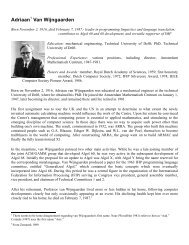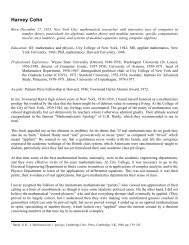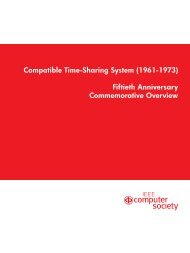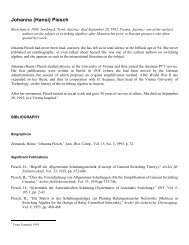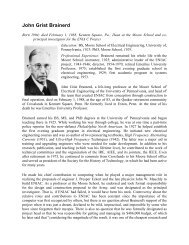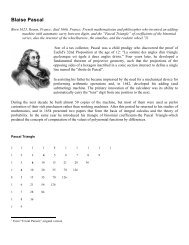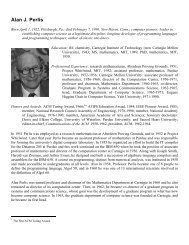L - Walden-family.com
L - Walden-family.com
L - Walden-family.com
Create successful ePaper yourself
Turn your PDF publications into a flip-book with our unique Google optimized e-Paper software.
Bolt Beranek and Newman Inc.<br />
the proliferation of IMP configurations which has taken place was<br />
not foreseen; therefore, the program differences currently cannot<br />
be conveniently <strong>com</strong>puted from a simple configuration key. Instead,<br />
the configuration irregularities must be explicitly tabled.<br />
3. 1.2 Packet Flow Through Major IMP Routines<br />
Figure 3-3 is a schematic drawing of packet processing.<br />
The processing programs are described below. Packet flow may<br />
be followed by referring to Figure 3-3.<br />
The Host-to-IMP routine (H-I) handles messages being<br />
transmitted into the IMP from a local Host. The routine first<br />
accepts the leader to construct a header that is prefixed to<br />
each packet of the message. It then accepts the first packet<br />
and, if no allocation of space exists for the destination IMP,<br />
constructs a request for buffer allocation, which it places on<br />
the task queue. Single-packet messages are placed directly on<br />
the task queue regardless of allocation status and are held via<br />
the oendin~<br />
oacket table until either a RFNM or allocation is<br />
returned. A returned RFNM releases the packet. A returned<br />
allocation for the single-packet message will cause retransmission<br />
from the background loop. Requests for multipacket<br />
allocation are sent without actual message data. The request<br />
is recorded at the destination IMP and an allocation message<br />
is returned via the background loop when space is available.<br />
A returned allocation causes H-I to release the first packet<br />
with header to the task queue via the programmable task interrupt.<br />
Subsequent input is then accepted from the Host until<br />
end of message (EOM) occurs. The routine also tests a hardware<br />
trouble indicator and verifies the message format. The routine<br />
is serially reentrant and services all Hosts connected to the<br />
IMP.<br />
3-8 2/73<br />
,<br />
j<br />
1<br />
,.,<br />
;<br />
,<br />
l<br />
,;j<br />
']·<br />
I. '~<br />
: '<br />
J<br />
']<br />
']<br />
J<br />
J<br />
J<br />
J<br />
1<br />
J '







